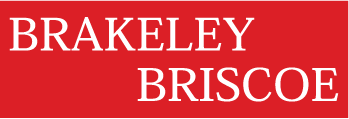How Community Colleges Build Endowments
Melanie Brandston
To help Anne Arundel Community College Foundation (MD) plan a campaign that will include an endowment goal, Brakeley Briscoe surveyed endowment programs at other community colleges and public and private four-year institutions.
Our findings showed that philosophies and policies for endowments and endowed funds varied widely. The urgent need for private fundraising in community colleges is relatively new; therefore, strategies and policies are not as uniform as in private higher education, private secondary education, or even public four-year institutions, which have all been raising endowment dollars in greater amounts and for longer periods of time.
Community college fundraising leaders’ views on endowments ran the gamut from, “I’m not really big on endowments—unless they’re large; they don’t make much impact,” to, “No publicly funded school ever became great on public fund s.” Yet the value of endowment in higher education finance is well proven.
Support structures vary
Community college foundation and development staff structures, the funding sources for salaries, foundation operating needs, and endowment administration are quite varied. Best practices are not uniform. The make-up of the advancement offices and sources of funding are usually a product of the particular environment of the college in question.
Some development staff, like the ones at Anne Arundel Community College Foundation, are state employees, and the operating budget of the Foundation flows from public funds. In the case of Norwalk Community College (CT) the fundraising staff are all employees of the Foundation, and have a continuing and annual need for operating dollars that is largely unmet by either the state or their annual fundraising activities. Norwalk’s Foundation board has therefore voted to charge a 1% administrative fee on endowment gifts to help defray operating costs. With Valencia Community College in Orlando, FL, the operating expenses of the Foundation are almost completely defrayed by the rental income it receives from real estate investments .
Creative endowment strategies
Our research uncovered a number of examples of funds and programs that represent interesting, effective and “out-of-the-box” thinking on the part of the two-and four-year public colleges. Some attract funding from unusual sources and some qualify for matching grants from public funds. At King’s College, Wilkes Barre, PA, the Shoval Center for Community Engagement and Learning was endowed and named by an individual and was so attractive that others, including foundations, contributed to it in large amounts. At SUNY Dutchess Community College the students created an endowment. They voted to have $10 per semester added to each student’s bill. They also qualified for a Title III matching grant in public funds. Some use innovative fundraising events. Valencia Community College gets everything donated and every penny raised goes to scholarships. They have a wine tasting and food event where the entire community gets involved. Others build endowments using non-fundraising initiatives like cell phone towers and billboards that fund faculty development endowments. Creative, resourceful thinking, that follows the strengths of the institution and its community bring terrific results for endowment fundraising.
Focus on strengths and needs
While many community colleges have relatively small endowments and most of their funds are restricted to scholarships, a small number have been successful in creating endowments for a wider range of purposes. Schools wishing to go beyond scholarship align endowments with their own mission, vision, needs, goals, and strategic direction. Furthermore, by seeking endowment for the strengths and strategic goals of the institution, endowment fundraising can take on greater urgency and importance.
